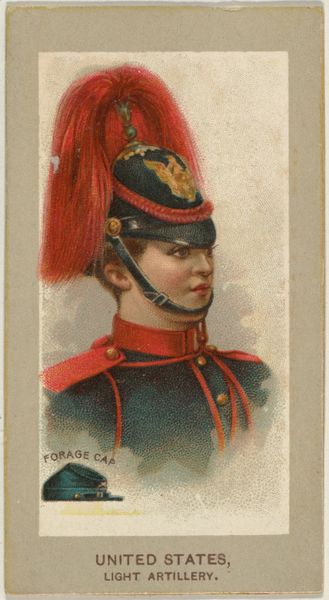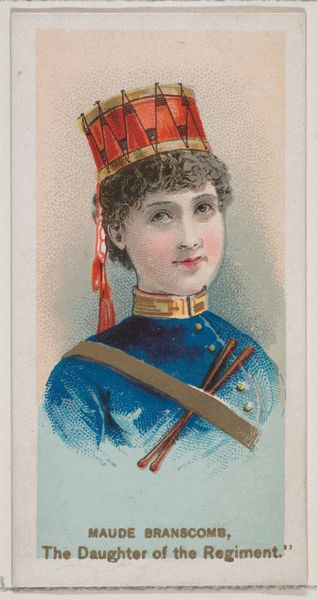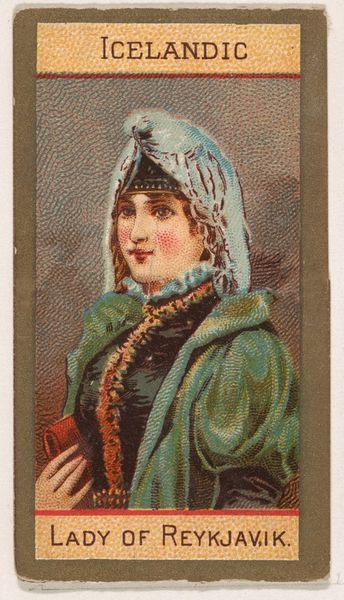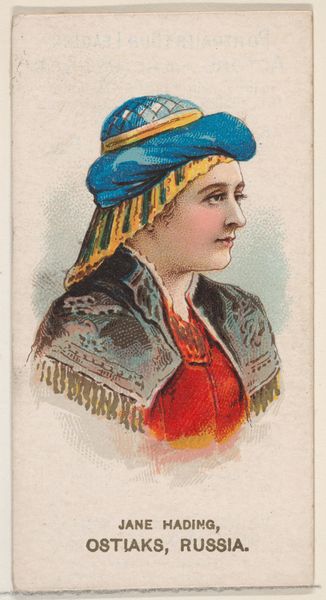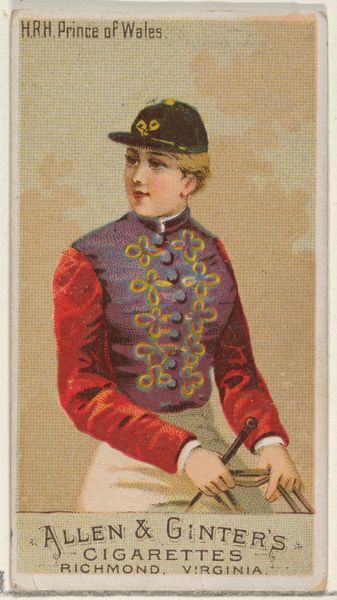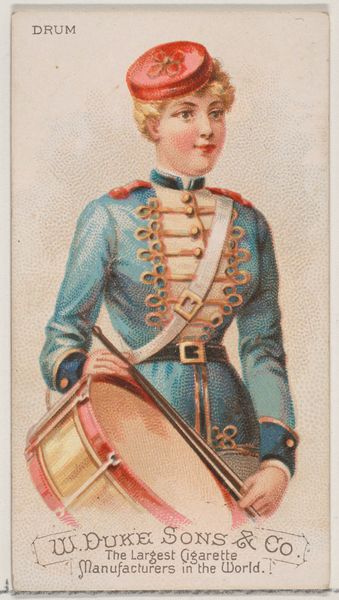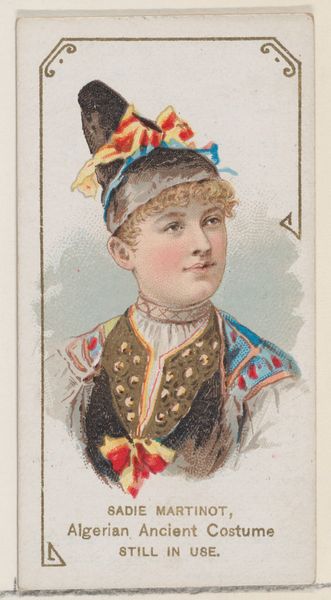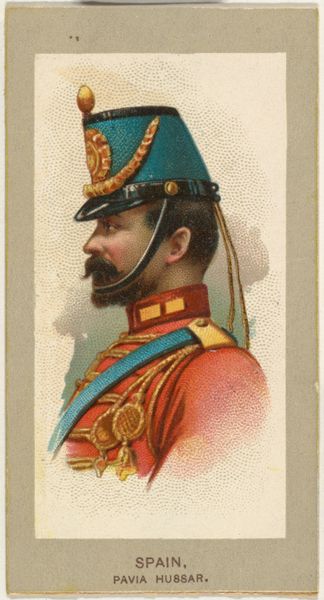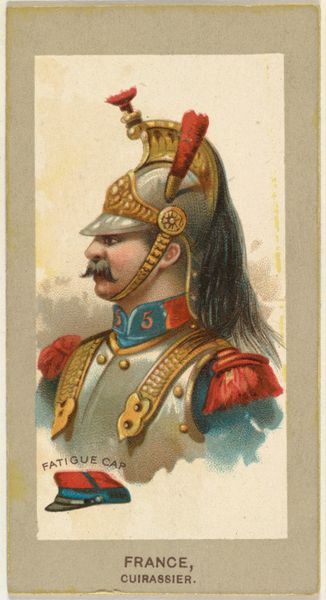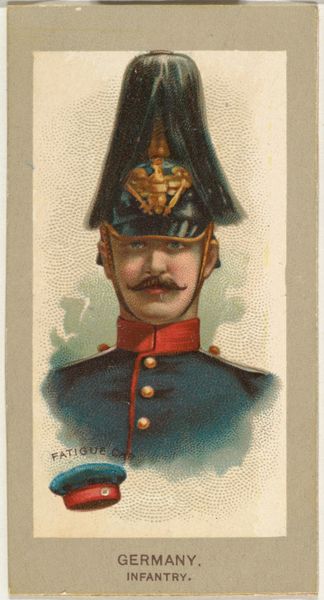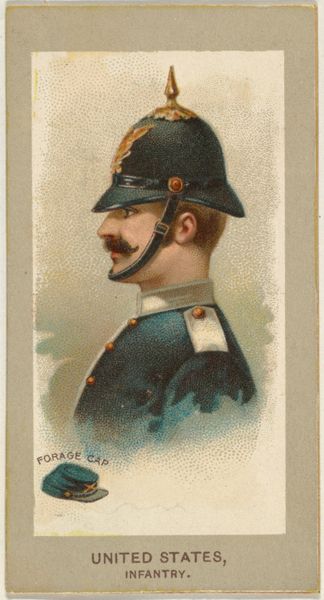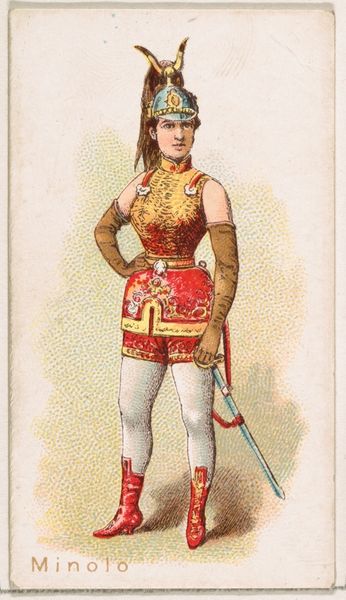
Fatigue Cap, Field Artillery, Germany, from the Military Uniforms series (T182) issued by Abdul Cigarettes 1881
0:00
0:00
drawing, coloured-pencil, print
#
portrait
#
drawing
#
coloured-pencil
# print
#
coloured pencil
#
genre-painting
#
history-painting
#
academic-art
Dimensions: Sheet: 3 3/16 × 1 3/4 in. (8.1 × 4.4 cm)
Copyright: Public Domain
Curator: I find the precision of this late 19th-century print quite striking. Note the tight rendering of the uniform's details—especially the sheen on the helmet. Editor: Immediately, I’m struck by a sense of antiquated power and subtle tension; there is something very composed and yet aggressively poised about this image. The proud profile juxtaposes the weight of military regalia against the face of what appears to be a youth. Curator: Indeed. This is plate T182 from the "Military Uniforms" series issued around 1881 by Abdul Cigarettes, specifically "Fatigue Cap, Field Artillery, Germany". Look how each element contributes to a cohesive whole—the arrangement of color, the delicate gradations of tone. Editor: Thinking about Abdul Cigarettes, this print becomes a cultural artifact intertwined with histories of colonialism, commerce, and even propaganda. What image of German military might was meant to be transmitted, consumed, and internalized at a moment of intensifying global tension and national ambition? Curator: Well, considering the context of academic art and the prevalence of history painting, one might argue it seeks to portray a dignified image of military service and German identity. Notice the compositional choices—the crisp line work and controlled application of colored pencil create a sense of order and authority. Editor: But who had access to this idealized depiction, and what were its psychological and political effects on diverse audiences, especially when deployed within a capitalist project promoting an imported product? The rosy cheeks feel dissonant and uncanny amidst a vision of military stoicism. Curator: Your perspective underscores the layered meanings inherent in these images. For me, the technical skill remains paramount—a careful study in the rendering of form. The artist achieves an admirable likeness within the constraints of the print medium. Editor: And, by examining its circulation and historical context, it opens up discussions around how images perpetuate national narratives, and it helps us to consider how such seemingly innocent portraits function in broader systems of power. Curator: A vital consideration! The nuances you brought up highlight the multifaceted nature of visual interpretation and our role as mediators of art's ongoing conversation. Editor: Absolutely. Bringing these artworks into contact with critical social issues helps to broaden appreciation and contextual understanding in productive ways.
Comments
No comments
Be the first to comment and join the conversation on the ultimate creative platform.

